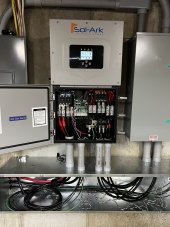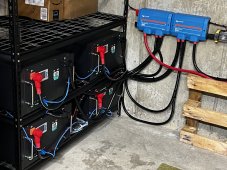robby
Photon Vampire
- Joined
- May 1, 2021
- Messages
- 4,129
If you look at the EG4 Lifepower Manual it says Maximum Discharge 100A and then next to that on the right it says 30A recommended. We have asked Signature Solar what does that mean because the two numbers are conflicting.Wow, thanks for that! I was trusting that number...didn't realize there was a discrepancy! I watched the video where Will opened up both the Lifepower and the SOK, and other than both being essentially identical inside, the build was superior with the Lifepower.
Is it a Max of 100A or 30A? They have refused to clarify the issue! Users have had problems with the Batery tripping out with loads that exceeded 30A so we can only conclude that the 100A was just complete rubbish.
The Well Pump is the Big issue and worst yet it's a 120V Well Pump. Those fridges and freezers will also put a bit of load on the system, but you really have to build the system to deal with the Well Pump or else the Inverter will trip out everytime the Pump turns on.I don't believe my load is high -- that's why I was going to put the Sol-Ark between the main panel and the house subpanel. The heaviest draws on the house subpanel are the side-by-side refrig/freezer, a chest freezer, a small pump in our septic lift station, an exhaust fan in my greenhouse, and the well pump. The rest are just lights, kitchen (which we would only use the microwave for short periods...no oven use), and computer and/or TV. Nothing else. Just keeping us basically in food and water during an extended outage.






